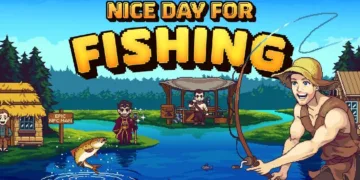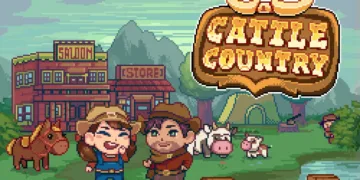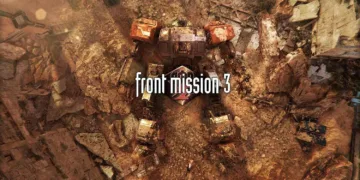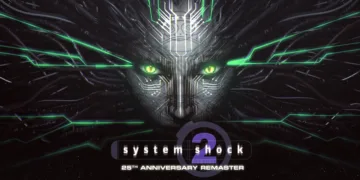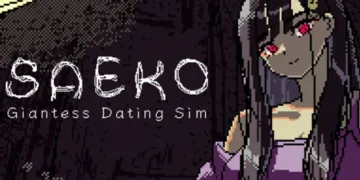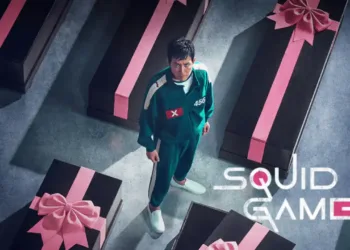The world of Azerim feels immediately familiar to anyone who has spent time in a massively multiplayer online game. The starting town of Honeywood is a perfect satire of the genre’s tropes, a place where “Adventurers” speed through low-level quests handed out by one-dimensional non-player characters.
You begin as one such NPC: Baelin, a humble fisherman whose existence is defined by a few repeated phrases about the weather and the quality of the fishing. The game’s clever premise is set in motion when a magical mishap erases all the actual player characters from the realm.
With no heroes left, the game’s code seems to glitch, promoting the simple Baelin to protagonist status. He is suddenly the only one capable of accepting quests, turning the typical RPG power fantasy on its head and tasking a background character with saving the world.
This satirical foundation supports a world rich with self-aware humor. The town is filled with quirky personalities who are amusing caricatures of classic RPG quest-givers, from a blacksmith who perpetually misplaces his grandfather’s hammer to a farmer whose fixation on garlic borders on the absurd.
The comedy effectively parodies the often-rote nature of questing and dialogue in older role-playing games. While the script is filled with references to the “Epic NPC Man” web series, this context is not essential. The jokes land because they poke fun at universal gaming conventions, making the adventure accessible and funny even without prior knowledge of the source material.
More Than a Minigame
Where many RPGs feature fishing as a passive, relaxing diversion, Nice Day for Fishing transforms it into the core combat system. This is not the tranquil activity found in Animal Crossing; every cast of the line initiates an active battle.
Each encounter follows a distinct rhythm. During your turn, you drain the fish’s health. When the creature turns to signal its own attack, you must defend. This creates a compelling back-and-forth, but the mechanics offer more depth than a simple quick-time event. You can perform a standard block to mitigate damage or, with precise timing, execute a parry that negates a significant portion of the attack, rewarding skillful play.
Each species of fish acts as a unique opponent with its own attack patterns and timings, demanding you learn their behaviors to succeed. This system is further deepened by a layer of RPG mechanics. As Baelin catches new types of fish, he unlocks a variety of magic spells that run on a stamina bar, including powerful direct-damage attacks, healing abilities, and debuffs that inflict bleed or burn effects.
These abilities add a necessary strategic dimension, turning tougher encounters into tactical puzzles. This design philosophy culminates in the game’s boss battles. These are not just larger fish with more health; they are challenging, multi-phase encounters that test your mastery of spells, timing, and defensive maneuvers, feeling more akin to a boss from a traditional action RPG than a fishing game.
The Grind of the Catch
The game’s overall structure deliberately mirrors the quest design of classic MMOs. The primary loop involves speaking to an NPC, accepting a fetch quest, traveling across the map to fish for a specific item or creature, and then returning to turn it in.
This cycle is the main driver of character progression. Completing quests rewards you with gold, which can be spent on upgraded fishing rods, hats, and other accessories that provide crucial stat bonuses. Catching fish grants experience points, which in turn level up Baelin’s core attributes of health, attack, and stamina, allowing you to tailor his build toward different playstyles.
While this structure is a clever nod to the genre it parodies, its inherent repetition can become a point of friction. The constant backtracking from one end of the map to the other makes the game feel best consumed in shorter sessions, as longer periods of play can make the fetch-quest design feel tiresome. The saving grace of this loop is the tangible sense of discovery.
Upgrading your fishing rod is not just about a stat increase; it grants access to deeper parts of the underwater world. Being able to finally reach a hidden cave or a new fishing zone provides a strong incentive to push through the more monotonous aspects of the questing.
A Catch Worth Keeping?
The game’s strengths lie in its charming 16-bit aesthetic, a clever premise that flips RPG conventions, and a combat-fishing system that is both engaging and surprisingly deep. When the balance between questing and fighting is right, the experience is delightful.
However, the experience is hampered by a reliance on grinding, which becomes particularly pronounced in the late game. Quest objectives begin to require an unreasonable number of rare items, some of which are on long, real-world respawn timers.
This can bring progress to a halt, making the final hours feel artificially extended. The frustration is compounded when a failed boss attempt results in the loss of all consumed potions and buffs, forcing a tedious re-gathering process that kills any sense of momentum.
This is a solid adventure for players with an appreciation for its unique mechanics and a tolerance for its deliberately repetitive structure. The game’s most notable achievement is its successful transformation of fishing from a passive hobby into an active and strategic challenge. It carves out a distinct identity for itself as a “fishing RPG” that is, despite its flaws, a truly memorable catch.
The Review
Nice Day for Fishing
Nice Day for Fishing hooks you with a brilliant premise and a surprisingly deep combat system that turns a simple hobby into a strategic challenge. Its charm and humor are undeniable. The experience is, however, weighed down by a repetitive quest structure and a frustrating late-game grind that can overstay its welcome. It's a creative and memorable adventure, provided you have the patience for its deliberate pacing and can look past the mechanical friction.
PROS
- Engaging and strategic combat-fishing mechanic.
- Clever and humorous story premise.
- Charming 16-bit pixel art and world design.
- Rewarding sense of exploration and progression.
CONS
- Quest structure is highly repetitive and involves constant backtracking.
- Significant grind, especially in the late game.
- Frustrating mechanics like item respawn timers and losing consumables on death.
- Pacing can feel tedious during long play sessions.
